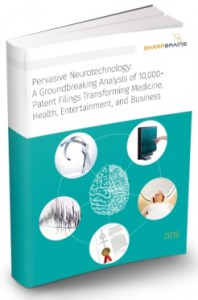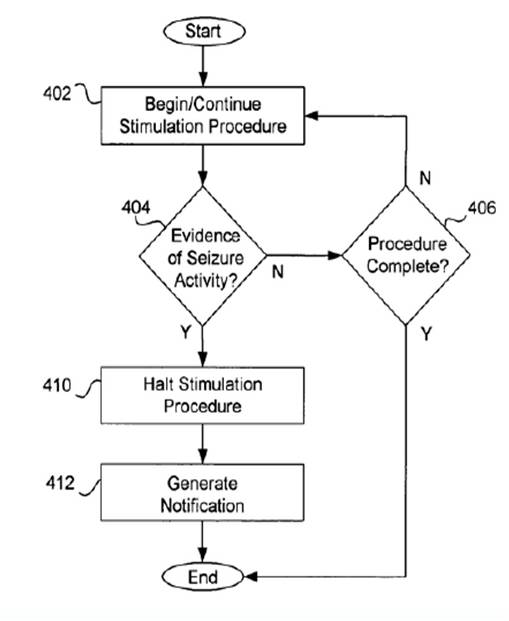Minimizing negative side-effects from electromagnetic neural stimulation: Key neurotechnology patent #39
Today we highlight a 2010 patent by Advanced Neuromodulation Systems addressing a serious concern during the use of electromagnetic brain stimulation methods–where unintended stimulation of neurons can cause seizures or migraine headaches.
U.S. Patent No. 7,831,305: Neural stimulation system and method responsive to collateral neural activity
- Assignee(s): Advanced Neuromodulation Systems, Inc.
- Inventor(s): Bradford E. Gliner
- Technology Category: Transcranial Stimulation
- Issue Date: November 9, 2010
SharpBrains’ Take:
The ‘305 patent addresses a phenomenon occurring during electromagnetic stimulation treatments of neurological conditions, where unintended stimulation of neurons can cause undesirable or collateral activity such as seizures or migraine headaches. Seizure activity may start when a collection of neurons known as the “seizure focus” exhibit activity that is not contained by adjacent neurons known as “surrounding inhibition.” The ‘305 patent discloses detecting the collateral activity associated with stimulation treatments (that may be due to lack of containment) and responding by either discontinuing the stimulation or applying a secondary stimulation to mitigate the collateral effects. Despite having only one independent claim, the ‘305 patent addresses an important unintended side effect of stimulation treatment and broadly covers the detection and countermeasures to that side-effect, which contributes to making the ‘305 patent a key non-invasive neurotechnology patent.
Abstract:
A neural stimulation system responsive to collateral neural activity that may arise in association with a neural stimulation procedure includes a stimulation interface configured to deliver stimulation signals to a target neural population, a monitoring interface positioned to receive signals corresponding to a neural activity within the target neural population, a stimulus unit coupled to deliver stimulation signals to the stimulation interface, and a sensing unit coupled to the monitoring device and the stimulus unit. The neural stimulation procedure may be directed toward rehabilitating, restoring, and/or enhancing one or more neural functions by facilitating and/or effectuating a neuroplastic change or reorganization; and/or affecting a neurological condition that exists on a continuous or essentially continuous basis absent the stimulation procedure. The sensing unit determines whether evidence of an collateral neural activity exists, whereupon the stimulus unit attempts to abate the collateral neural activity.
Illustrative Claim 1. A neural stimulation method, comprising:
- applying a first electrical stimulation signal to a target neural population within a patient, the first electrical stimulation signal directed towards treating pain or neurodegenerative disorders;
- determining whether counterproductive collateral neural activity exists, the counterproductive collateral neural activity being induced by the first electrical stimulation signal and including at least one of seizure activity and migraine activity; and
- responding to the counterproductive collateral neural activity when it is determined to exist such that the counterproductive collateral neural activity is inhibited.
 To learn more about market data, trends and leading companies in the digital brain health space –digital platforms for brain/ cognitive assessment, monitoring and enhancement– check out this market report. To learn more about our analysis of 10,000+ patent filings, check out this IP & innovation neurotech report.
To learn more about market data, trends and leading companies in the digital brain health space –digital platforms for brain/ cognitive assessment, monitoring and enhancement– check out this market report. To learn more about our analysis of 10,000+ patent filings, check out this IP & innovation neurotech report.



